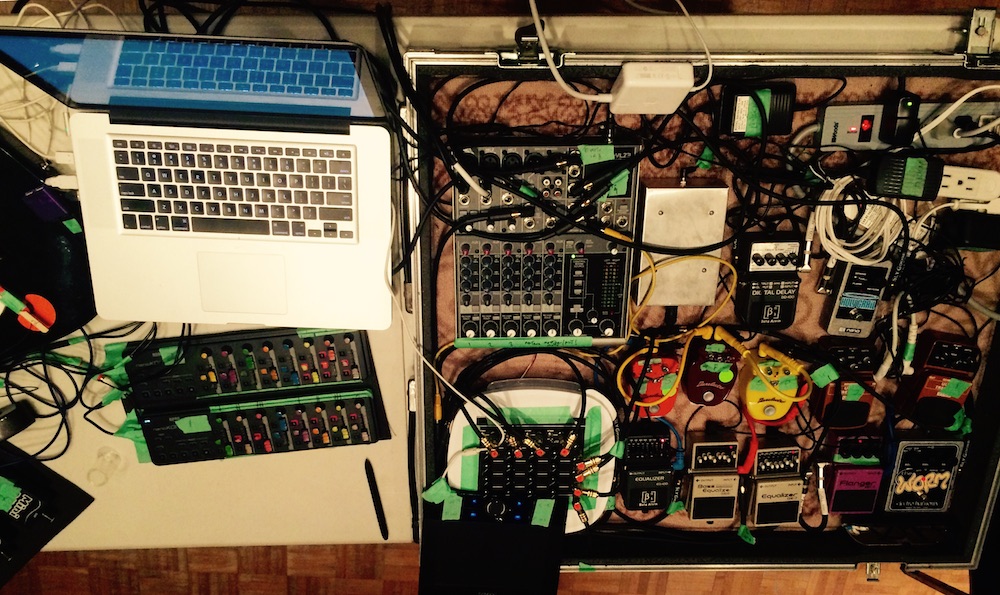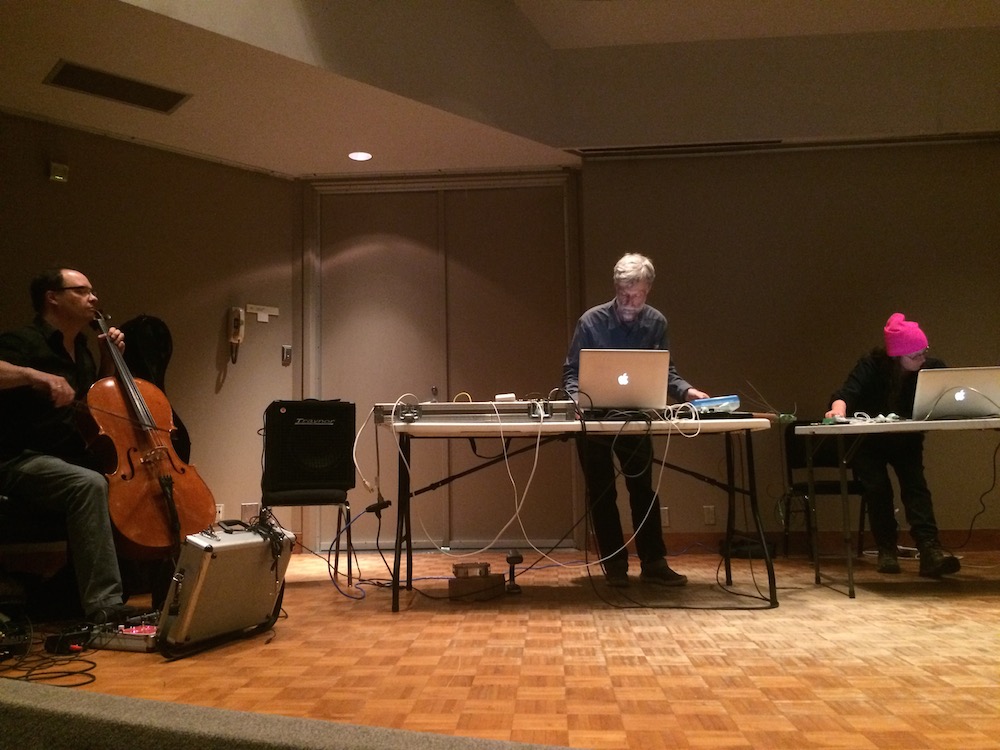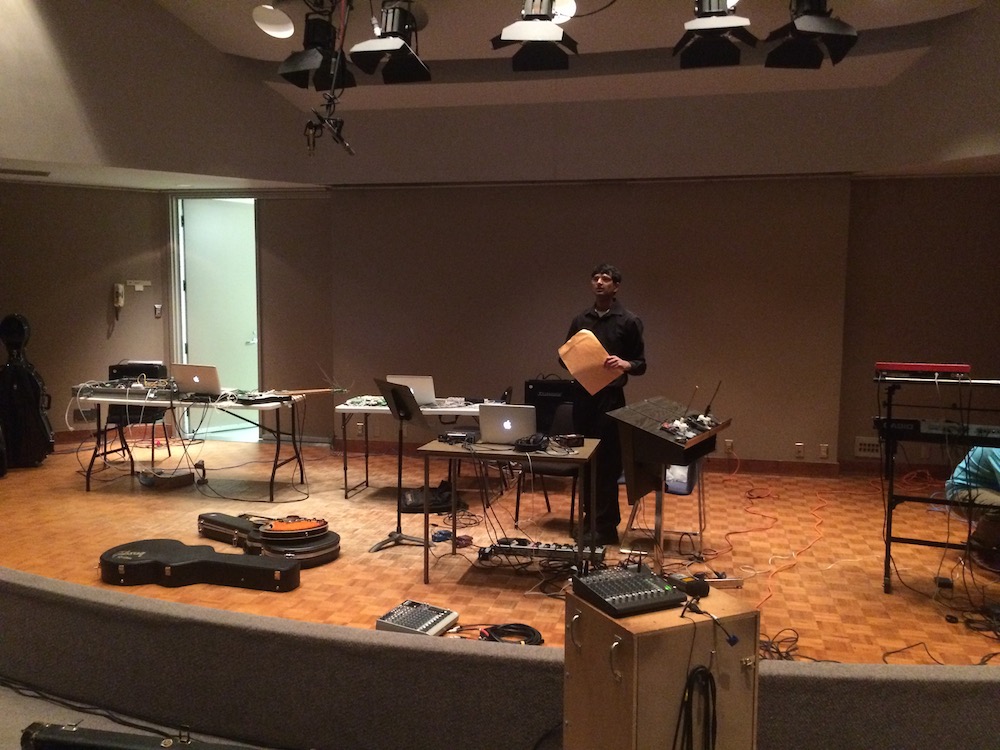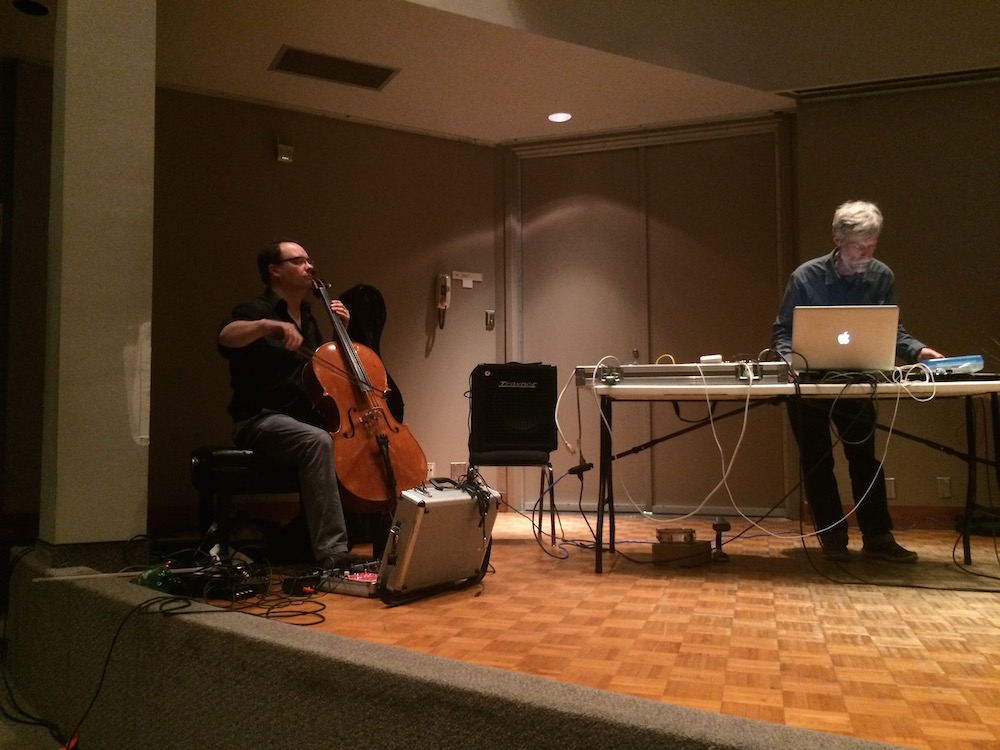
- LINES OF ENQUIRY | Indie-Classical, For All its Boundary-Shifting, Is Another Boys Club - December 2, 2014
- LINES OF ENQUIRY | To Hell and Back: Canadian Premiere of Piano-Four-Hands Arrangement of Liszt’s Dante Symphony Timely, Poignant - October 30, 2014
- LINES OF ENQUIRY | The Future of Notation Software - October 22, 2014
Ottawa’s electroacoustic music scene? After one discovers it exists, one realizes how vital and vibrant it is.
Jeff Morton greeted the supportive and sizeable crowd on the evening of Saturday September 13th at the University of Ottawa’s Freiman Hall in an appropriately mixed combination of grey blazer with dirty red sneakers. “There’s a lot to be seen on this stage, but there’s a lot of mystery too,” he enthused, before promptly giving way to the music.
Long, dulcet tones emanated from John Sobol’s saxophone as Jeff manipulated the outcome from stage left. The playing grew to rapturous intensity, the loudspeakers flanking the University of Ottawa’s Freiman Hall in turns responsive to his phrasing, distorting it in ways that sounded like we were all in the grips of a glitching mainframe, or a swarm of digital bees.
Not content to let his sax do all the speaking, Sobol then proceeded to tae the mic off the instrument and engage in what might best be called 21st century scat. These sounds were then manipulated by Jeff to sound like a drum kit rolling down a large sewer pipe.
Laura Kavanagh and Ian Birse were up next presenting a new work as Instant Places. hYdrANgeAS was, at least at first, quite claustrophobic in feel – notes constantly cut off, detuned, or faded out, quickly and yet feeling like a crawling morass of sound, supplied by the inimitable mainstay of Ottawa’s scene, Mark Molnar, on cello to supply much of the acoustic material. Ian also had an electric guitar sitting on the table next to the laptop, for good measure. A mess of wires underscored the will to include as many tools of sonic manipulation as could fit on their collapsible tables, including a Wacom tablet, NanoKontrols, QuNeo touchpads, and two laptops to process it all via Max software. At one point I think I may have heard the theme from the Imperial March (Star Wars), but I think this was more an artefact of my trying to relate the music in real terms to anything I may have experienced before. Of course, it doesn’t hurt that some of the sounds reminded me of light sabers either. I could have sworn there were also musical sources mixed in that the audience never heard in a “pure” manifestation, but indeed, part of the fun is not knowing whether a sound was sourced, mixed, or otherwise.
Later in the piece, Molnar insistently dwelled on some upper partials while Kavanagh settled on an eerie, soothing quadrophonic dreamscape. Someone’s voice was heard from Birse’s amplifier – feminine – but I’ll never whose, or why. From this seeming apex, sub bass tones punctured the reverie, and Molnar resumed activity, subtly fading out from there. Or so I thought – this voice became more prominent and central to the work as it proceeded.
This brings us to Sundar Subramanian closing out the evening with a focus on the electric guitar, but of course incorporating preparations, extended performance techniques, and electronic signal processing.
Subramanian kicked things off with a new piece. The squeaking emanating from MIDI foot controller he used was honestly a bit distracting at first, but I was sitting in the first row and it become less of an issue later on. Besides Max, Subramanian various used art eraser, a clarinet reed, a letter opener, a coin, a ruler, and a file to coax new sounds from the instrument. Besides the techniques themselves, the unprocessed material in the first piece was itself very tonal in nature, drawing from a typical blues/ rock vocabulary. This being said, it was interesting to hear this vocabulary subjected to the myriad electronic and prepared twists Subramanian introduced.
The second piece focused on prepared strings. “This is a programmatic piece – there’s a narrative to it,” Subramanian explained. Phrases were stark, and Subramanian used silence very effectively between them. The last piece, “Locks and Ripples,” was composed in 2013 with the support of the Saskatchewan Arts Board. True to its title, a calm menagerie of dulcet harmonics and soft melodies assisted by an e-bow served as an aesthetic counterpoint to the intensely jagged tones flying out the speakers. A single, delayed major seventh chord closed out the set.
Notaations, an improvising live electronic music collaboration between Jeff Morton and J. S. Chevrier, closed the evening with two pieces. This was certainly the most rhythmically grounded act, beginning with simple four-on-the-floor percussion and synthetic bass – frankly reminiscent, as if the late White Stripes had decided to go with a Moog instead of a guitar. An assortment of polyrhythms didn’t detract from this essential aesthetic sensibility. The second piece was more orientated around a series of chords, bell-like tones swirling around a march befitting of a cathedral for cathodes, which at least for this evening Freiman Hall was.
Overall, it was an extremely enjoyable experience, and my curiosity was sated… at least, until Volume 3.
You can discover more of Ottawa’s electroacoustic and improvised music scene (with recordings) by way of Improvising Musicians of Ottawa/Outaouais’ website.
- LINES OF ENQUIRY | Indie-Classical, For All its Boundary-Shifting, Is Another Boys Club - December 2, 2014
- LINES OF ENQUIRY | To Hell and Back: Canadian Premiere of Piano-Four-Hands Arrangement of Liszt’s Dante Symphony Timely, Poignant - October 30, 2014
- LINES OF ENQUIRY | The Future of Notation Software - October 22, 2014






